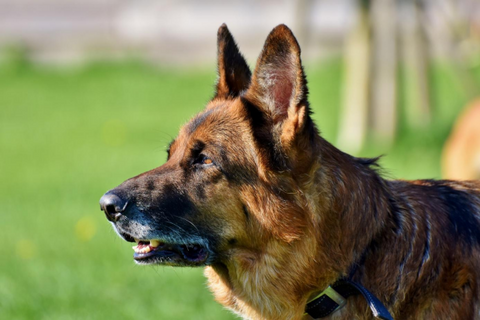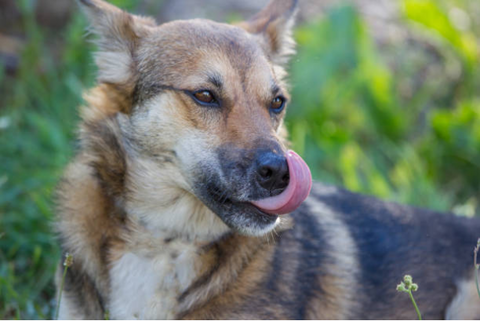How to Read Your Dog’s Body Language?
We all love dogs, but we aren’t always good at understanding what they think and how they are feeling. When trying to understand people, non-verbal communication is just part of understanding someone, but with our canine best friends, body language is everything. All humans can benefit from knowing how to read dog body language in order to understand how dogs communicate.
Understanding dog body language includes looking at a body posture as well as facial expressions. This will help you gain a deeper understanding of a dog’s emotional state as well as overall comfort.
Context is almost more important than what your dog is doing. If you’re playing tug-of-war and she growls, it’s probably playful (excited). If you’re walking in a new neighborhood and she growls, she may sense something dangerous (fearful). Always factor context into your interpretation of your dog’s communication.
For example, popular viral videos and pictures of dogs on social media often show dogs whose eyes are open very wide, or who are looking awkward while children lay on them. To the untrained eye, these pictures might look cute. Once you are familiar with canine body language, however, you’ll quickly realize how uncomfortable and stressed the dogs are.
Becoming fluent in canine body language can also help you to be a better advocate for your dog in a variety of situations like greeting other dogs, meeting new people, or even visits to the vet.
Physical Communication
According to experts at VCA Ark Animal Hospitals, canines express emotions through physicality. They aren’t always telling us what their intentions are but simply how they feel in a given situation. Physical communication can include anything from a stance or movement to an action Sadie takes. Again, look at the whole dog to understand what she’s telling you. Key spots include the ears, tail, eyes and mouth. Be on the lookout for changes in physicality, too. A fearful physical response can swiftly turn into an aggressive one.
Your Dog’s Ear Position Tell You

The way your dog holds his ears can tell you a lot about his mood. If a dog’s ears are pinned back against his head this can mean that he is scared, stressed, or nervous.
Ears that are perky and pointed forward indicate that a dog is alert. Perhaps he just caught an intriguing scent, or he sees another dog in the distance.
If your dog’s ears are sitting to the side or slightly back, this can mean your pup is relaxed and calm.
Dog Tail Body Language
Your dog’s tail position is another way to tell what his current mood is. An upright, rigid tail is a sign of alert. Perhaps your pup is standing up to another dog that is barking at him or he’s feeling unsure of the stranger knocking on the door.
A raised and wagging tail is a sign of excitement. You’ll likely notice your dog’s tail in this position when you come home from work each day, or when you pick up his leash at walk time.
A horizontal tail indicates that your dog is alert. He’s intrigued by something, whether it be a person, a smell, or a situation, and he’s deciding what to do next. If you play fetch with your dog, you might notice his tail in this position as he waits in anticipation for you to throw the ball.
If your dog’s tail is low it means he’s relaxed. This is probably your dog’s most common tail posture when you’re hanging around at home. His tail tells you he’s comfortable in his environment.
When a dog tucks his tail between his legs or pins it low against his body it means he’s scared or stressed. It’s probably not common to see your dog like this, but if you do, give him space and try to remove him from the stressful situation.
Another great tip is to pay attention to which side your dogs tail is wagging. If you see the tail is more to the left then the situation in which it finds itself is not comfortable, whereas to the right, you dog is feeling playful, comfortable with the situation or the stimulus it is observing.
The Language Of A Dog’s Eyes

Like people, a dog’s eyes can tell you a lot about how they are feeling. A content dog will look at you with a relaxed expression or ‘soft eyes,’ while direct staring indicates a dog might feel threatened or curious (keep in mind there are breeds that use a lot of eye contact in order to do an action, such as Border Collies). If a dog averts their gaze, they may be worried about interacting with you and would like to have their space. Large, dilated pupils, or when a dog looks at you from the corner of their eyes, usually prelude aggressive or fear-based behavior.
This is referred to as “whale eye” When your dog’s eyes are making a whale eye, their pupils are very dilated and bulging with lots of white showing.
Yawning

Yawning can be a sign that your dog is nervous or stressed. However, it can also mean that your dog is excited. After all, context is everything. Dogs often yawn in an attempt to calm themselves, which explains why he may yawn when both are excited or nervous.
Next time your dog yawns, note the situation. Does he yawn when you reach for the treat bag or his leash? Though, if he’s yawning after a long day of playing, he might just be tired!
It’s wise to be cognizant of this behavior so you can remove your dog if you sense that he’s becoming overwhelmed.
Licking His Lips

Similar to yawning, dogs may lick their lips to calm themselves. And yes, they also do it when they are hungry.
Again, try to note when your dog licks his lips so you can understand which situations make him nervous. Does he do it during bath time? At the vet’s office?
Whenever your dog feels nervous, offer him some additional support to reassure him.
Putting It All Together
When deciphering your dog’s body language it’s important to look at the big picture. Dogs rarely employ just one of these signals at a time. Just as humans may shout when they are excited or angry, your dog may have perky ears when he is alert. You will be able to tell which it is by noticing the body language of his ears, tail, and stance altogether.
Next time you interact with your dog, pay special attention to his body language. Try to notice how his posture changes when he is in situations that might make him happy, excited, stressed, or relaxed. Understanding the basics of dog body language is sure to strengthen your bond with your pup. It will also help you read the communication signals of other dogs you meet, and thus avoid any unfortunate interactions.
We know that you care about your relationship with your pup, so we thought this guide will suit perfectly for your future interactions. Plus, we recommend our Dog Grooming Clipper which is not only Ultra-Quiet but also it comes with a Reactive SMART Motor Control that senses the level and thickness of pet hair and automatically adjusts to optimal speed.
Check also our other products for your pup on our shop section and get that gadget that you always wanted. https://dogcare.net/pages/all-products
